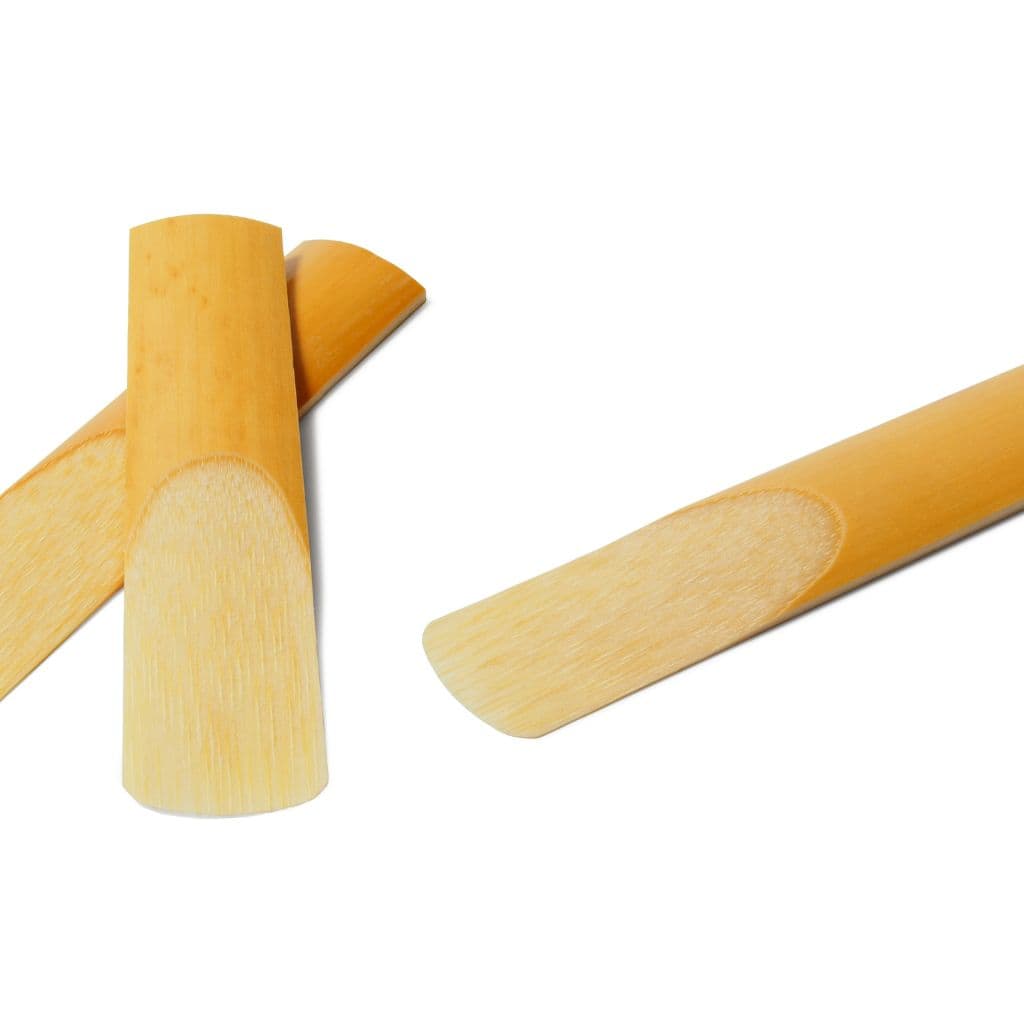Do you wish to know what size saxophone reed is right for me? Yes, the appropriate reed size for your saxophone is determined by your skill level, saxophone type, mouthpiece, personal preferences, and environmental conditions. Again, beginners should use softer reeds (lower numbers), while intermediate and expert musicians should try harsher reeds (higher numbers).
Your reed selection is also influenced by the type of saxophone and mouthpiece you choose. Finally, personal choice and experimentation are important factors in determining the best reed for your playing style and demands.
Read more article here:What Is The Difference Between 13 And 14 Snare Drums?{ This is my secret}
Let us dive deeper:
Is Reed Size 3 Good?
The size of a reed for a musical instrument is a personal preference that is influenced by aspects such as skill level, music kind, and embouchure. A #3 reed is of medium strength and is often used, however, what constitutes “good” varies according to the musician.
Experimenting with various reed sizes and getting professional assistance might help you locate the best one for your requirements.
Players frequently utilize different reed strengths for different contexts, and they may consider elements like the mouthpiece and individual skill when making their selection.
Is 1.5 Reed Good For Beginners?
A 1.5 reed is a suitable choice for beginners, especially on woodwind instruments like clarinet and saxophone. It is soft and light, making it easier for beginners to produce sound, feel comfortable, and focus on building fundamental skills.
However, the best reed strength can vary, so beginners should start with a 1.5 reed and may explore different strengths as they gain experience. Seeking guidance from a music teacher is recommended for making the right choice.
How Do I Know If My Sax Reed Is Too Soft?
Difficulty managing pitch and tone, a limited dynamic range, resistance concerns, endurance challenges, and irregular articulation are all signs that your saxophone reed is too soft. If you have these problems, use a slightly harder reed to improve your playing.
The optimal reed strength varies from player to player, so experimenting and seeking advice from an experienced tutor can help you discover the correct match.
What Reeds Do Professional Saxophone Players Use?
Professional saxophone players use a variety of reed brands and strengths based on their individual preferences, music style, and desired sound. Commonly favoured reed brands include Vandoren, Rico (now D’Addario Woodwinds), Selmer, Alexander, Gonzalez, La Voz, and Legere.
The choice of reeds can vary between classical and jazz players. Additionally, the ideal reed strength varies among professionals, and they often experiment to find the best fit for their playing style and equipment.
Are 2.5 Reeds Better Than 3?
The choice between 2.5 reeds and 3 reeds depends on individual preferences and playing style. 2.5 reeds are softer, and suitable for beginners and those seeking a mellow tone. 3 reeds are slightly harder, offering more control, making them favored by intermediate or advanced players, especially in jazz. The best reed strength varies based on embouchure, mouthpiece, and personal preference. It’s recommended to experiment with both strengths to find the right fit for your needs, and consulting a music teacher can be helpful.
Do Thicker Reeds Sound Better?
The notion of whether thicker reeds sound better is subjective and is influenced by personal tastes. Thicker reeds (greater strength) provide better control and a clearer tone, which is preferred by experienced players, particularly in jazz.
Thinner reeds (lower strength) provide a mellower tone and are recommended by beginners. The “better” sound is determined by your playing style and aims, and it is critical to explore to discover the reed strength that best meets your needs and tastes.
What Strength Reed For Beginner Sax?
For beginners learning the saxophone, it’s recommended to start with a lower reed strength, typically around 2 or 2.5. These softer reeds are more forgiving and make it easier for beginners to produce sound while developing their fundamental skills.
As beginners progress, they can consider transitioning to higher reed strengths. However, the ideal reed strength varies among individuals, and seeking guidance from a teacher is helpful for beginners.
What Size Reed Did Charlie Parker Use?
Charlie Parker, the renowned jazz saxophonist, used a range of reed strengths during his career, typically between 2 and 3.5 or higher. His choice of reed strength was influenced by factors like the mouthpiece he used, the music style, and his evolving preferences.
This highlights the individual nature of reed selection and its impact on a musician’s sound and expression. Parker’s legacy continues to influence saxophonists and jazz musicians.
Do Thicker Reeds Make High Notes Easier?
Thicker reeds (higher reed strengths) can make playing high notes easier for some saxophonists, as they offer greater control, improved projection, and stability in the upper register.
However, the relationship between reed strength and high notes is not universal, and it depends on individual factors such as embouchure and playing style. It’s essential to experiment with both reed strengths to find what works best for your specific needs and preferences, and seeking guidance from a teacher can be valuable in addressing high-note challenges.
Read more article here:Does The Oboe Have An Octave Key?{ True or False]
Conclusion
Now that we have learnt that the size of a saxophone reed is a very personal selection that is impacted by elements like experience, embouchure, mouthpiece, music style, and personal tastes.
To simplify learning, beginners frequently start with softer reeds (about 2 to 2.5), but experienced players may experiment with different strengths. There is no one-size-fits-all solution and help from a teacher can be beneficial. Finally, the correct reed size allows you to attain the tone, control, and musical expression you seek on the saxophone.

